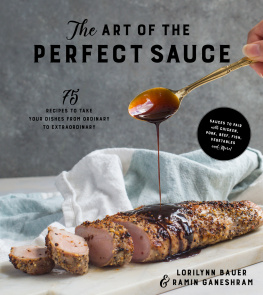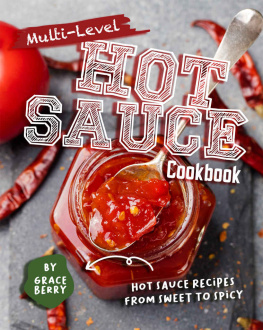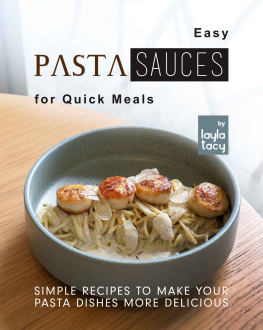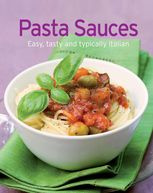Contents
Guide

TheART OF THE
PERFECT SAUCE
75
RECIPES TO TAKE YOUR DISHES FROM ORDINARY TO EXTRAORDINARY
LORILYNN BAUER & RAMIN GANESHRAM

The author and publisher have provided this e-book to you for your personal use only. You may not make this e-book publicly available in any way. Copyright infringement is against the law. If you believe the copy of this e-book you are reading infringes on the authors copyright, please notify the publisher at: http://us.macmillanusa.com/piracy.
TO BRITTANY, ADDISON, SOPHIA, BLYTHE AND MADELINE WHO INSPIRE US TO MAKE EVERY MEAL A DELICIOUS ADVENTURE.

One of the first things you learn in culinary school after how to make a proper stock is how to make sauces. This was true for us both, even though we went to different schoolsLorilynn to Culinary Institute of America and Ramin to Institute of Culinary Education. We have pursued different culinary paths as cooksLorilynn as a restaurant and private chef with a six-season stint on Iron Chef America as Cat Coras sous-chef, and Ramin as a food journalist and cookbook writer.
Despite this, weve always managed to come together to make some epic meals. In those marathon cooking sessions, time and again we always went back to the importance of a great sauce. Considered a foundation of fine cuisine, sauces can elevate even the most well prepared dish to new heights. In fact, in traditional French kitchens, the position of saucier or sauce-making chef was a profession unto itself and one of honor and distinction.
For many of us, the sauces we learned in culinary school seemed already past their prime by the time we came along. These were the five traditional Mother Sauces of French cuisine: Bchamel, a milk sauce thickened with white roux; Sauce Tomat, or tomato sauce; Veloute, a white stock thickened with white roux; Sauce Esapagnole or Brown Saucewhat most people would call gravy; and Hollandaise Sauce, an emulsion of clarified butter and egg yolks.
Heavy, creamy and thick, these sauces seem, at first blush, to have no place in modern cooking with its emphasis on fresh, whole ingredients prepared with a light hand to allow their inherent flavors to shine through.
The fact is, though, nothing could be further from the truth. Even if rarely used on their ownparticularly in a home kitchenwhen amended or adapted, the French Mother Sauces are the basis for other sauces we all know and love. Mayonnaise and its garlicky counterpart aioli is an emulsification based upon the same principles as a good Hollandaise. If you love true Mac n cheese, thank Sauce Mornayessentially Bchamel fortified with cheese. Many savory glazes are built out of Sauce Espagnole.
More than the sauces themselves, it is their technique that has the most valueand allows us to experiment with a wide variety of ingredients to design the fresh new sauces that you will find in this book.
Youll find that, for the most part, the sauces weve created here are extremely simple to make and span a variety of techniques that, once mastered, will empower you to invent unique sauces of your own. A handy indicates where sauces can serve double or even triple duty across a variety of proteins and vegetables. An additional section for dessert sauces is sure to appeal to your sweet tooth as well.
One final note: Each recipe contains prep times and cooking times. Of course, these may vary slightly based on your own skill level and kitchen equipmentmodern appliances can have quite a range of power. As such, we suggest using the visual and doneness cues as your primary guideline for the completed sauce.
LORILYNN & RAMIN

One of the first and foundational techniques learned by culinary students is how to make a rich and flavorful stock using meat bones and trimmings. Stocks are an important building block for sauces, and youll find that many, although not all, of the sauces in this book make use of vegetable, chicken or meat stock.
While stocks are easily purchased at any grocery store, the ones you make yourself are going to be fresher and feature the flavor profiles you most favor. The recipes we provide are basic stock recipes, but you may certainly increase any of the aromatic ingredients (onions, garlic, carrot, celery or spices) to suit your taste.











